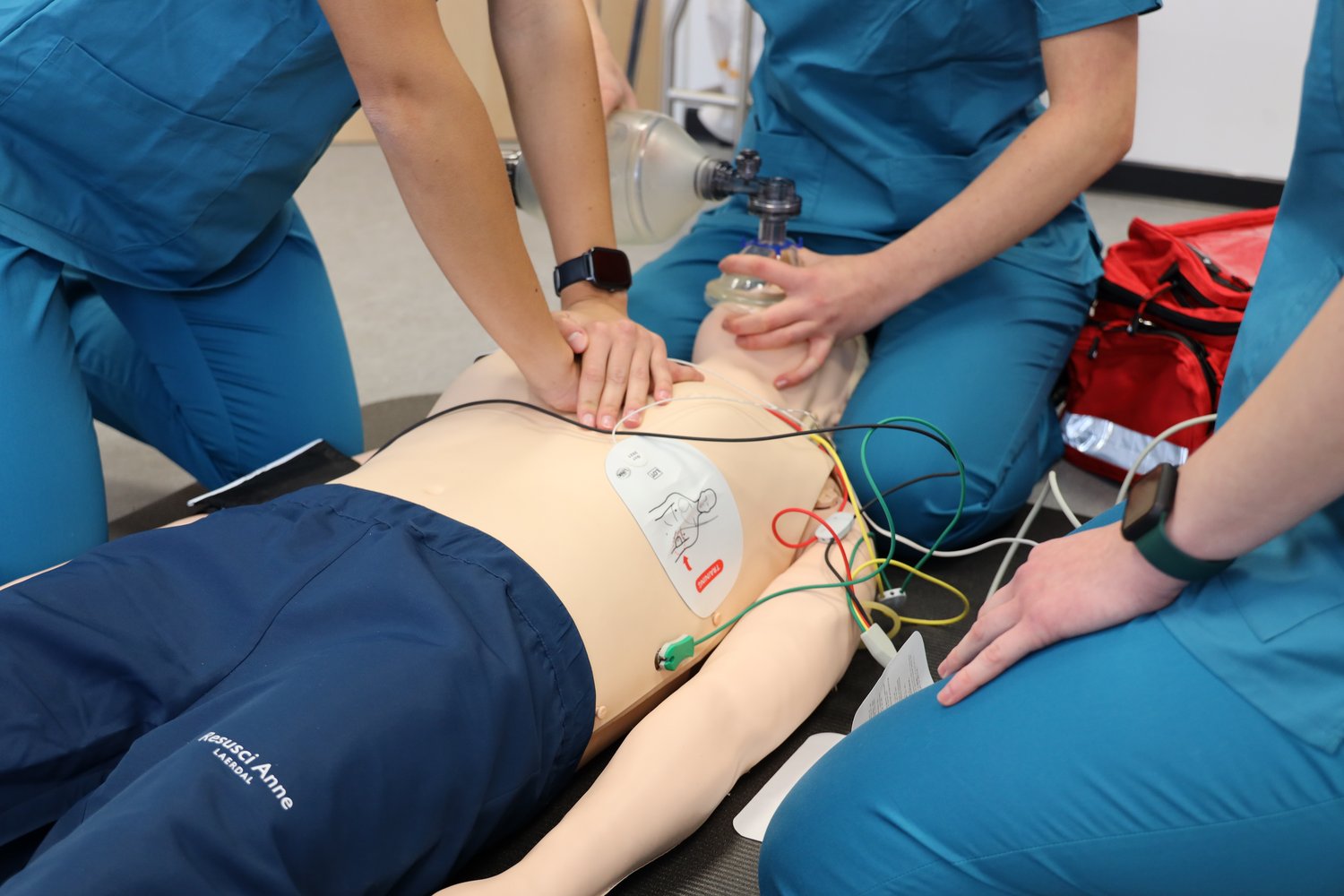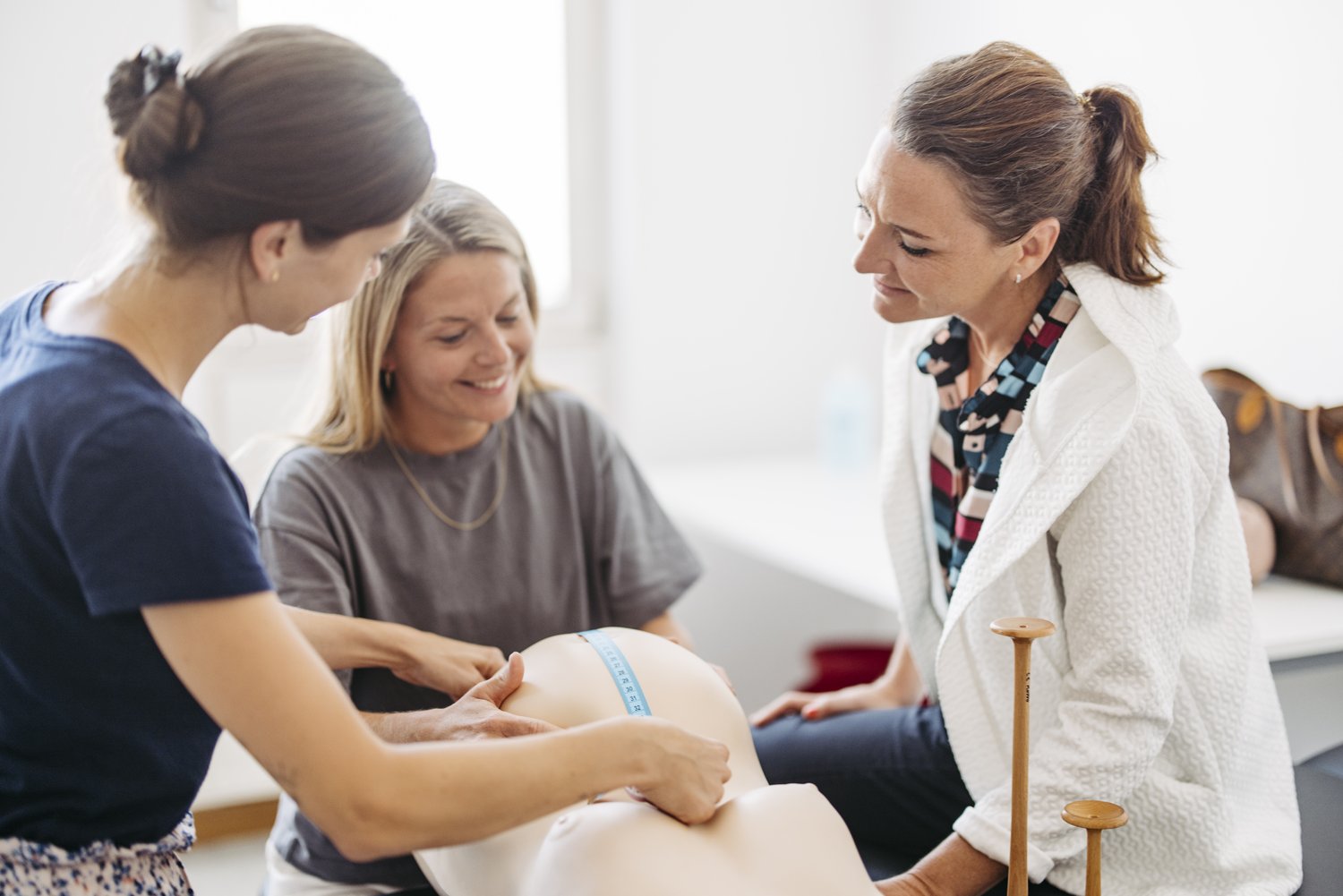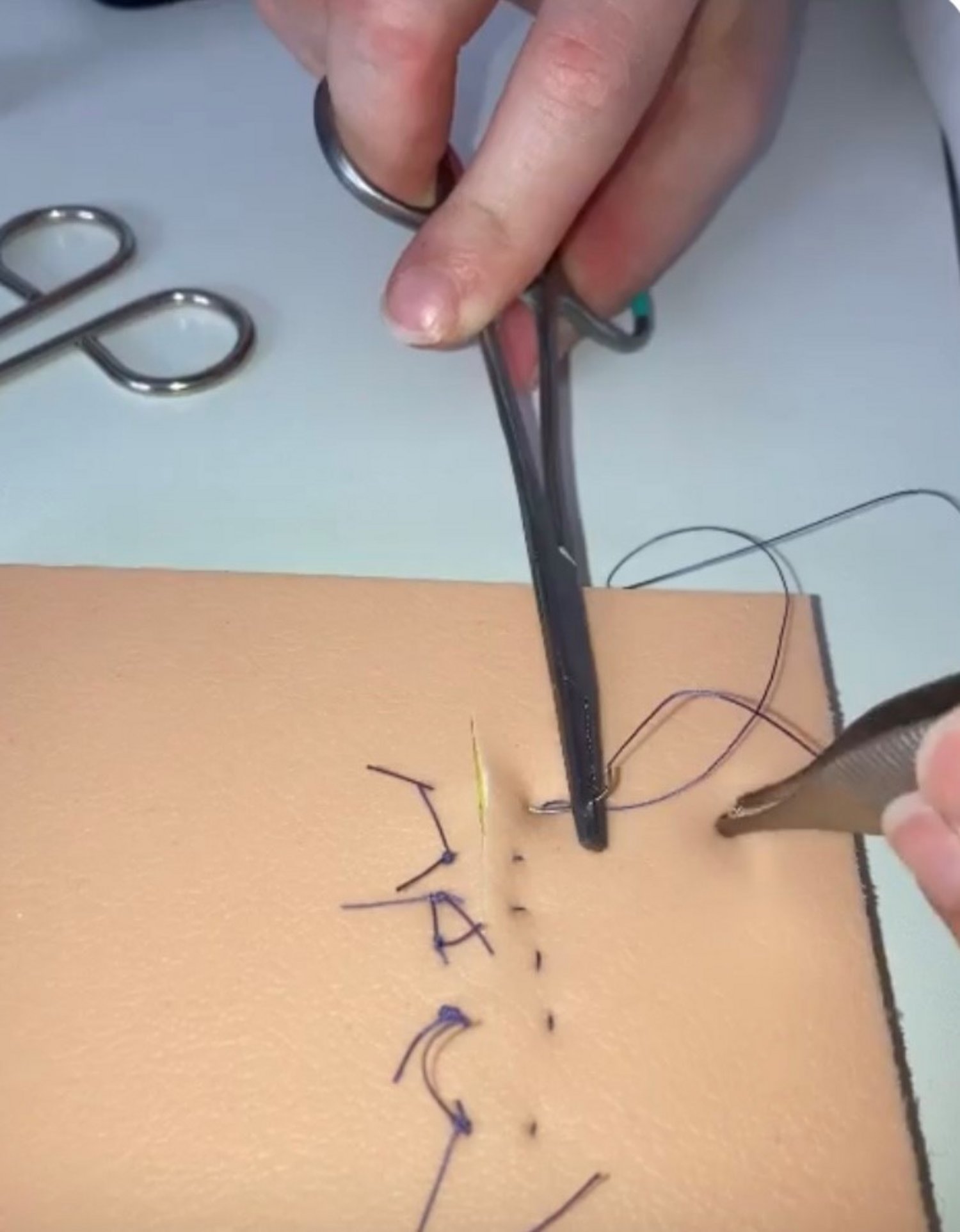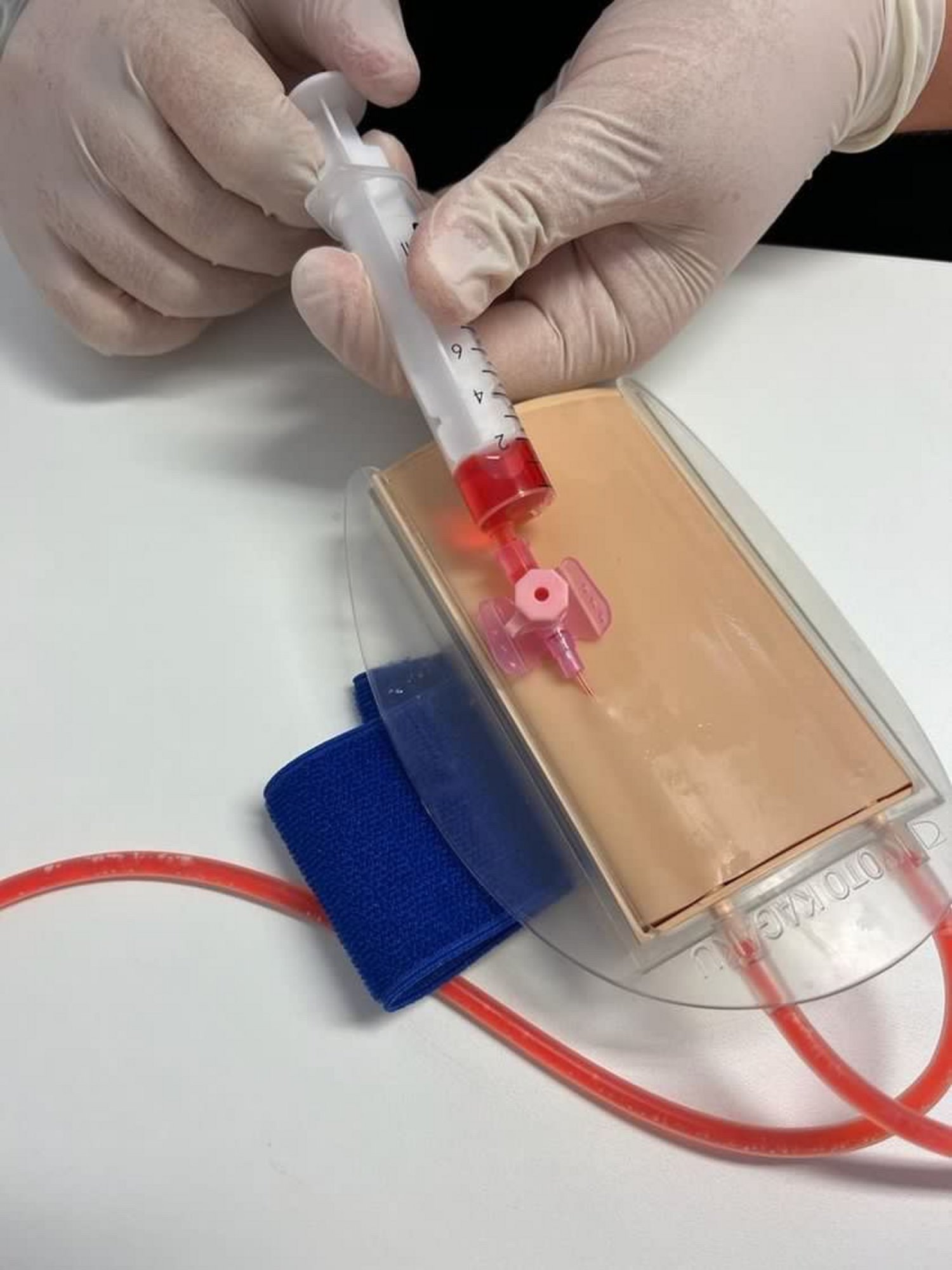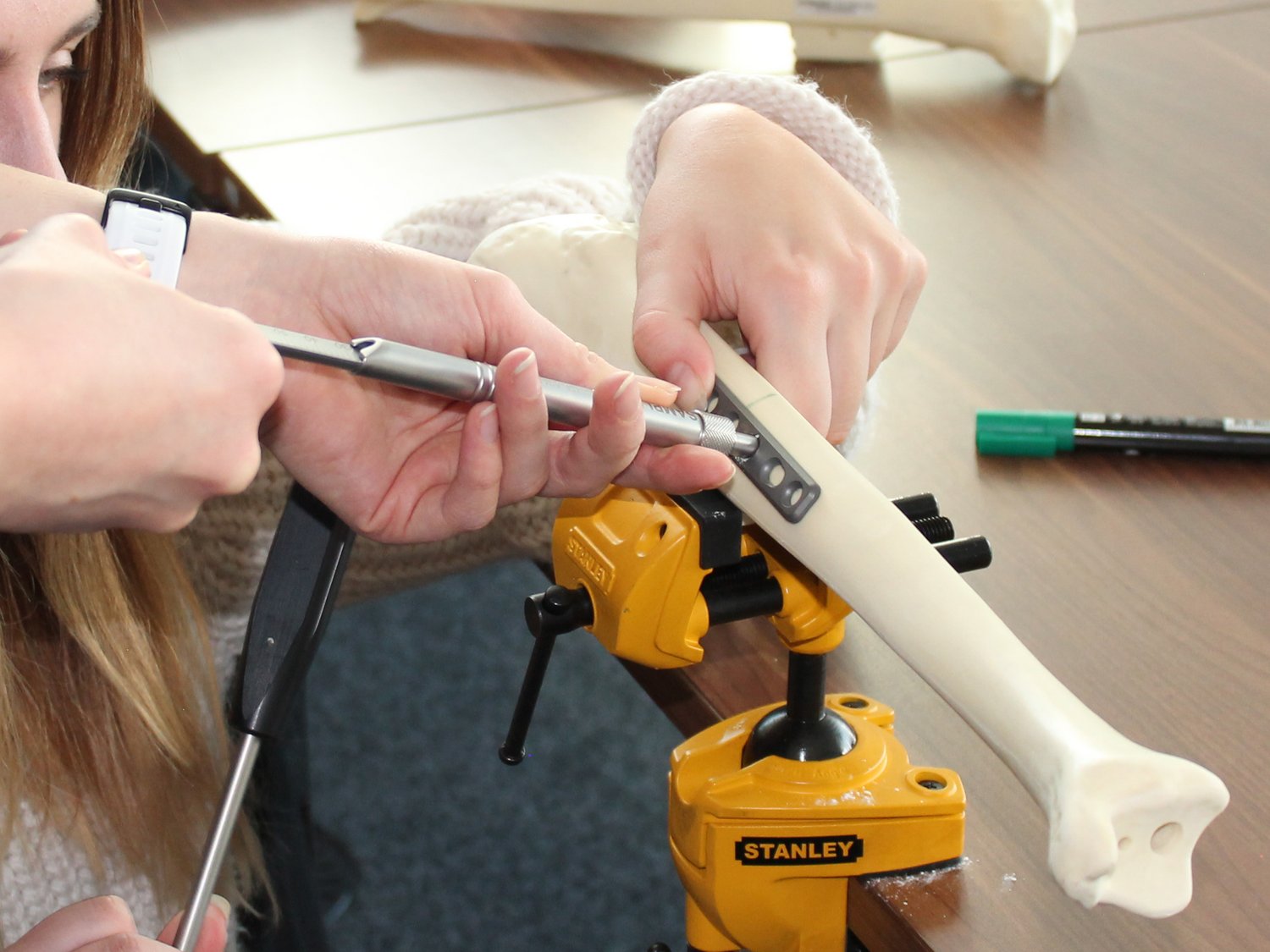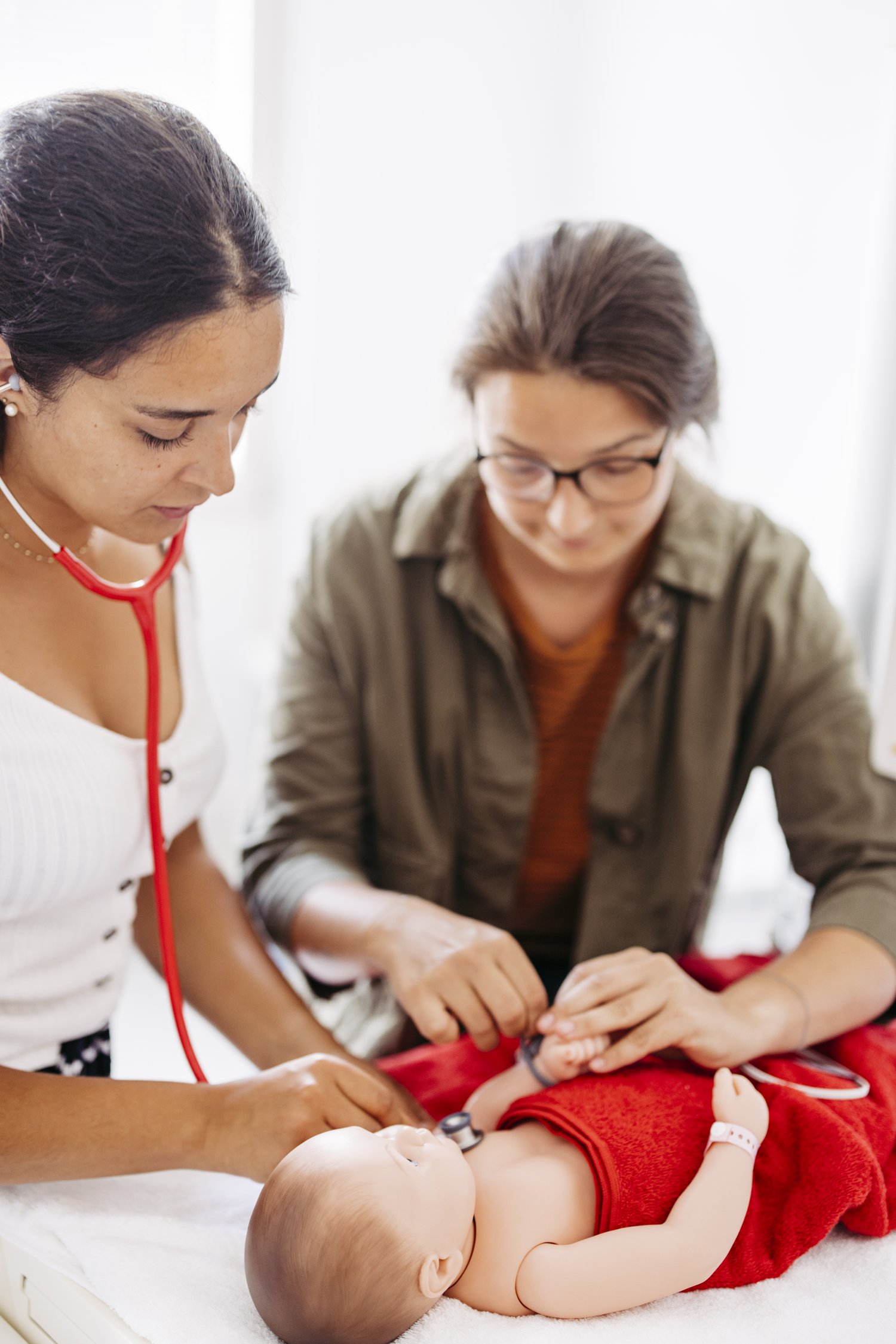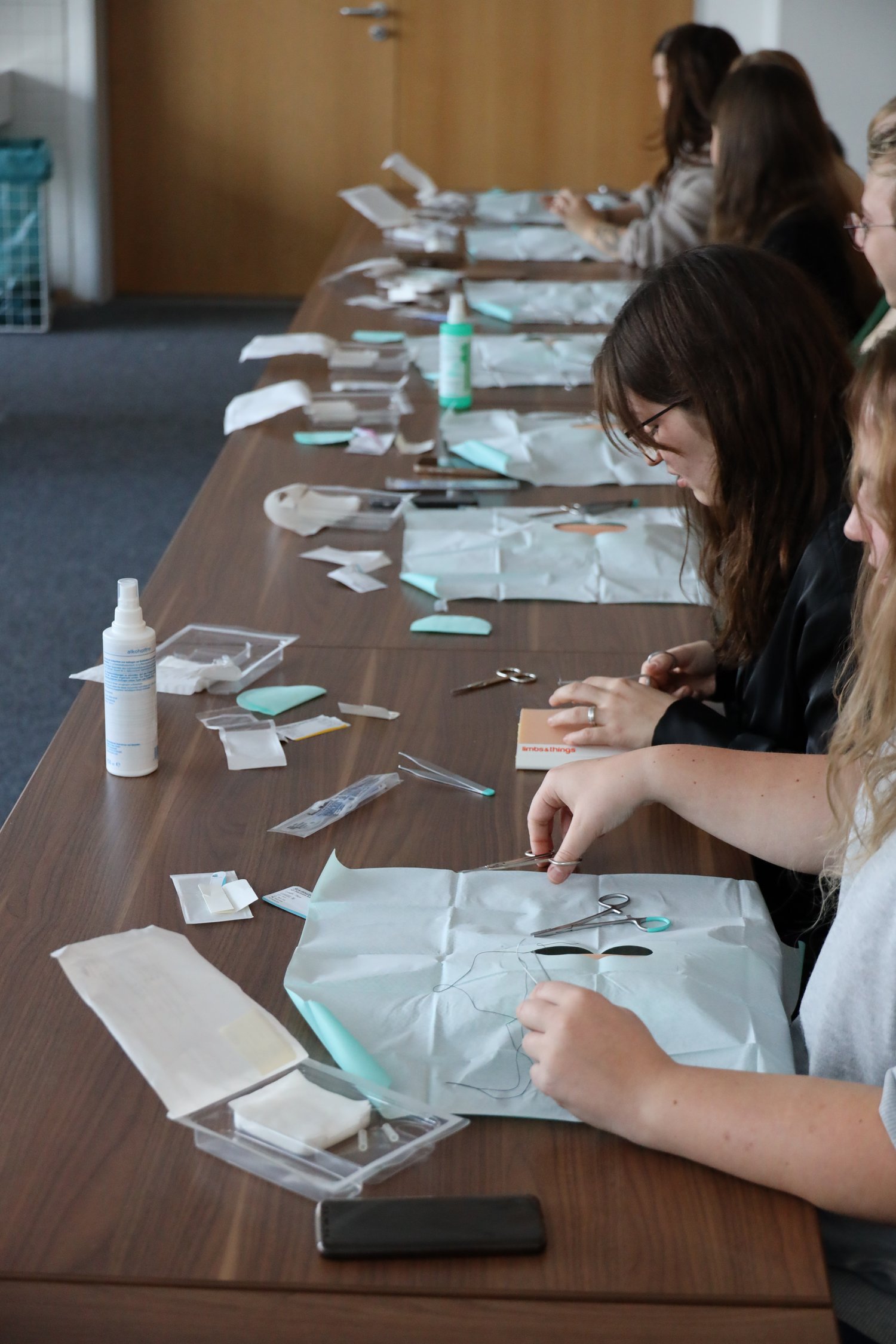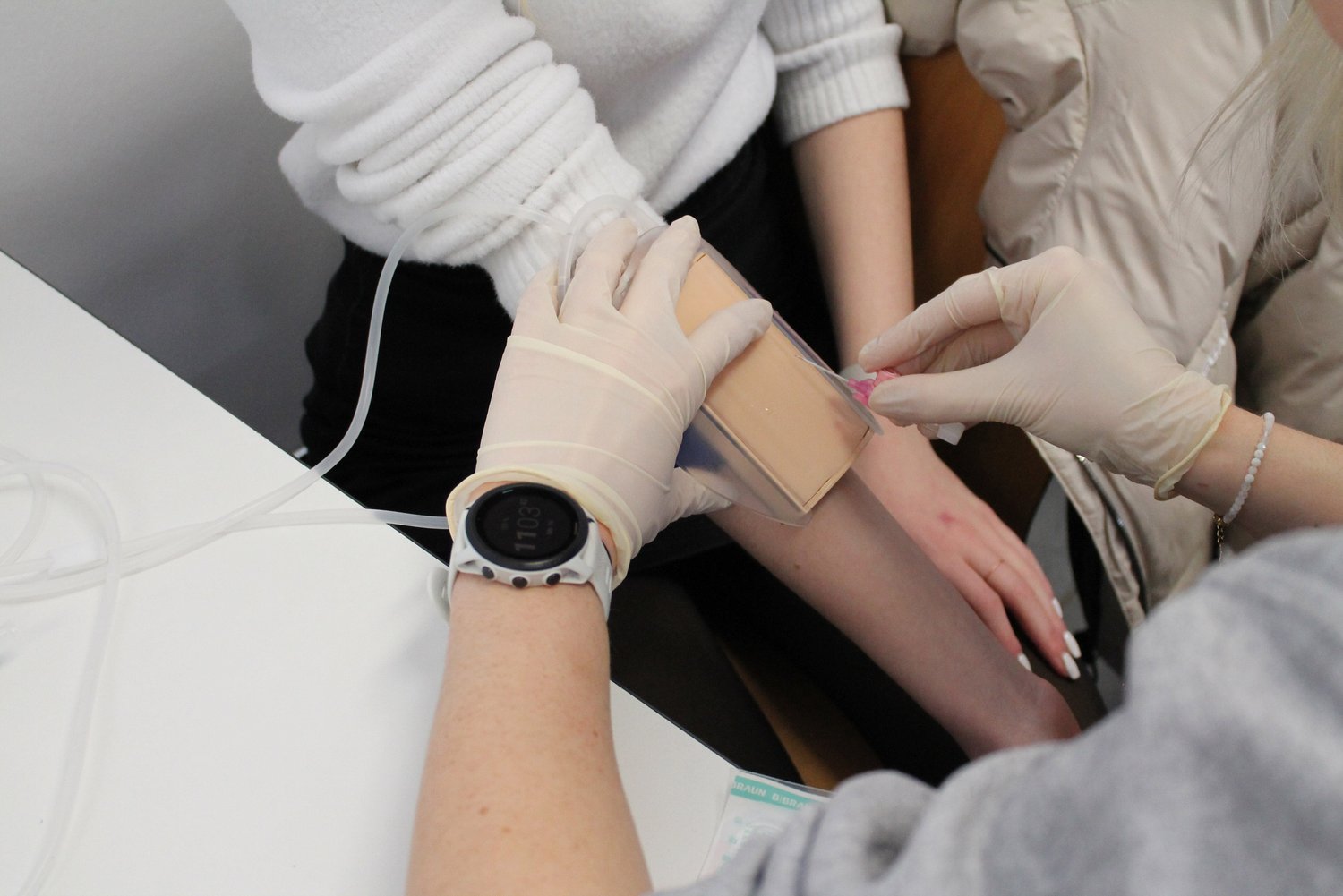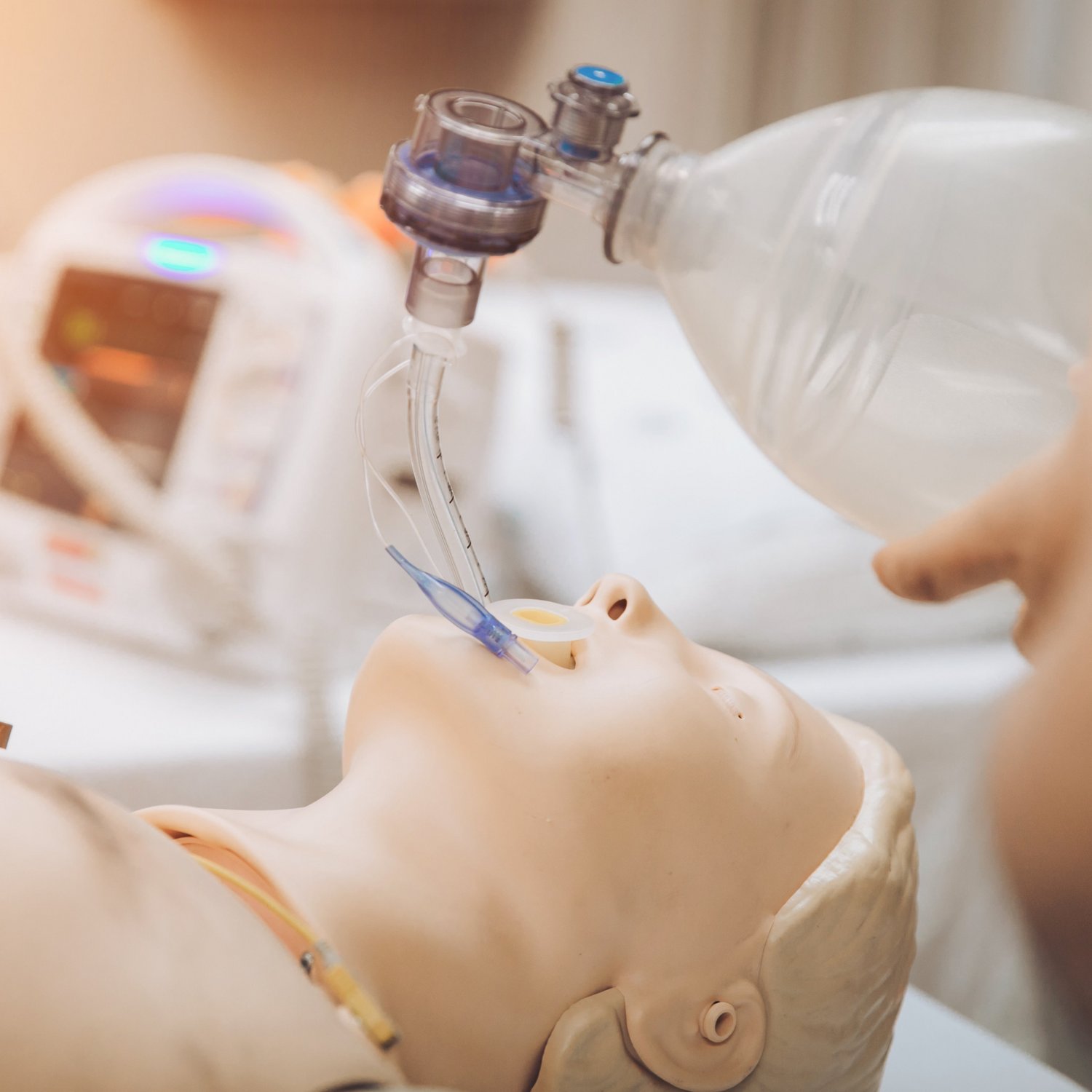CIMT
Centre of interdisciplinary medical and midwifery teaching and training
The CIMT is an innovative teaching and learning environment in which routine and emergency situations can be simulated in detail using modern simulation technology.
| Director: | Prof Dr Aida Anetsberger (Medicine) Prof Anne Wiedermann (Midwifery) |
| Rooms: | E112 / E011 / E009 / E008 / E007 |
| Telephone: | 0871 506 468 |

The Physician Assistant and Midwifery primary and postgraduate degree programmes, which are characterised by a strong practical focus, require not only the teaching of sound theoretical knowledge but also sufficient space for learning skills and abilities that are critical for later professional life.
The Centre of Interdisciplinary Medical and Midwifery Teaching and Training, or CIMT for short, is an innovative teaching and learning environment in which a wide range of routine and emergency situations can be simulated in detail using modern simulation technology. Using the available midwifery and medical equipment as well as an audiovisual system, students can practise and optimise specific actions and then reflect on them together.
As a scientific partner, Landshut University of Applied Sciences is part of the Lower Bavaria Medical Campus, which means that medical students will also be involved in interprofessional training programmes at CIMT in the future. There are plans to relocate and expand the CIMT medical simulation centre to a central area of the campus in the coming years. The realistic nature of the laboratory exercises enables complex issues and interrelationships to be visualised in a memorable way, giving students the opportunity to improve their professional, methodological and social skills while actively shaping learning processes. As a so-called third place of learning, the CIMT thus proves to be the ideal link between university and practice, making theoretical content tangible and preparing students in the best possible way for the challenges of everyday working life.
What are skills and simulation training courses?
The knowledge imparted in the courses is partly integrated, partly deepened in tutorials and practical exercises and individually trained in skills and simulation training on simulators, models and devices. Students thus acquire and deepen their expertise in the translation of theoretical knowledge into skills.
What is special about this type of training is the realistic realisation of the exercises. Skills training programmes present individual practical skills, such as measuring blood pressure or taking blood samples, while simulation training programmes work with more complex situations. The environment, such as the room design, ambient noises, people present or available equipment and utensils, is adapted depending on the scenario or topic so that students are confronted with challenges that are as realistic as possible and can practise their skills.
A special feature of the simulation training courses are exercises in predefined scenarios. The students are introduced to and prepared for these scenarios in advance. They then run through a routine or emergency scenario in groups, whereby the lecturers are not actively involved. During the scenario, the students have to make their own analyses and decisions and carry out treatments. This independent action stabilises and generalises the students' knowledge and skills. Each scenario is followed by a debriefing with the lecturers to reflect together on what has happened.
- Interdisciplinary, action-orientated teaching and skills and simulation training using modern technologies and trained drama patients
- Recognising, analysing and dealing with problems in the group, such as promoting problem-oriented thinking or team-oriented communication and action
- Practical state examination in accordance with Section 29 of the midwifery study and examination regulations
- Intensive supervision of the trainees
- Collective learning and promotion of quality and performance through joint briefing and debriefing
- Communication training with patients, relatives, colleagues, etc.
- Learning from experience and mistakes in a protected environment
- Stabilising and generalising knowledge and skills
Equipment in the CIMT
| Nursing ward simulation room |
| Simulation room delivery room |
| Practice simulation room |
| Life-size, high-tech simulators with vital signs monitors |
| Portable colour Doppler sonography device |
| Birthing bed, birthing stool, birthing pool |
| REA unit for babies |
| Anatomical models |
| Arm models for venous injections and blood sampling |
| High-tech pregnancy examination model |
| Birth simulator for routine care and simulation of difficult births (simulation of postpartum haemorrhage, labour phases (latent, active, transition phase), assessment of cervix, position and orientation of the foetus, etc.) |
| Catheterisation model |
| Surgical suture trainer |
| AED trainer |
| Defibrillator and patient monitor |
| Learning apps |
| etc. |


